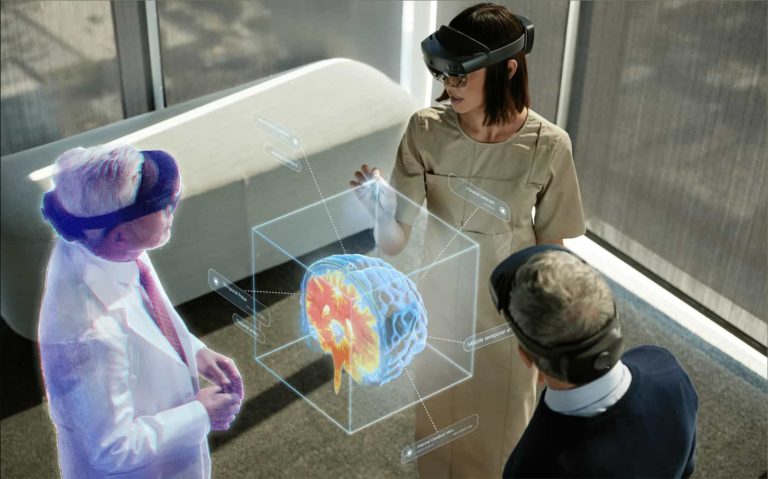
Though we spend ample time examining consumer-based XR endpoints, greater near-term impact is seen in the enterprise. This includes brands that use AR to promote products in greater dimension (B2B2C) and industrial enterprises that streamline their own operations (B2B).
These industrial endpoints include visual support in areas like assembly and maintenance. The idea is that AR’s line-of-sight orientation can guide front-line workers. Compared to the “mental mapping” they must do with 2D instructions, visual support makes them more effective.
And with VR, employee training and onboarding can be elevated through immersive sequences that boost experiential learning and memory recall. It also scales given that far-flung employees can get the same quality training, versus costly travel for senior training staff.
Altogether, there are micro and macro benefits to enterprise XR. The above micro efficiencies add up to worthwhile bottom-line impact when deployed at scale. Macro benefits include lessening job strain and closing the “skills gap,” which can preserve institutional knowledge.
But how is this materializing today and who’s realizing enterprise XR benefits? Our research arm ARtillery Intelligence tackled these questions in a recent report. It joins our report excerpts series, with the latest below on some of enterprise XR’s high-level drivers and dynamics.
Fertile Ground
Most AR and VR commentary focuses on consumer markets. But consumer XR ubiquity is years or even decades away. This timeline is due to the state of the underlying technology and the design challenges in building hardware that’s graphically-robust and stylistically viable.
Both factors are needed for consumer markets… yet both can’t be achieved today in a single device. Some innovators sidestep this dilemma with hardware that’s experientially-meaningful without graphical richness, such as Ray-Ban Meta Smartglasses (the topic of another report).
But while those workarounds and forward steps are being made in the consumer realm, XR finds fertile ground in the enterprise. Among other things, there’s less stylistic resistance to bulky headgear in work settings. More importantly, there’s a clearer business case for enterprise XR.
That business case involves things like productivity gains from line-of-sight guidance, or greater efficacy and efficiency in immersive training. These deployments span industrial settings (e.g., manufacturing) as well as corporate environments (e.g., design collaboration).
Specific use cases include AR visualization to support assembly and maintenance. It can also include visual guidance for IT field support. The idea is that AR’s line-of-sight orientation can make front-line workers more intelligent and empowered while achieving operational efficiencies.
Compared to the mental mapping they do with 2D instructions, visual support also boosts effectiveness and safety while lessening cognitive load. And with VR, immersive experiences can boost memory recall and experiential learning in training scenarios across several job types.
HR & XR
But it’s not all good news. Though all the above enterprise XR benefits are valid, several roadblocks stand in their way. These include organizational inertia, politics, bureaucratic systems, security concerns, and fear of new technology throughout a given enterprise.
Sticking with some of those organizational hurdles, the result is often the dreaded “pilot purgatory.” As its name suggests, this is when XR is adopted at the pilot stage, but never progresses to full deployment. It’s one of enterprise AR’s biggest pain points today.
Fortunately, there are tactics – most of them involving internal communications and change management rather than technological matters. In other words, sometimes it’s more about HR than XR. We recently went deep on these dynamics in an AWE panel we moderated.
So the question that remains is what are best practices for enterprise XR deployment? Why should enterprises invest in XR? And how should it be implemented? We’ll circle back in this series in the coming weeks to answer those questions through the lens of real-life case studies.

